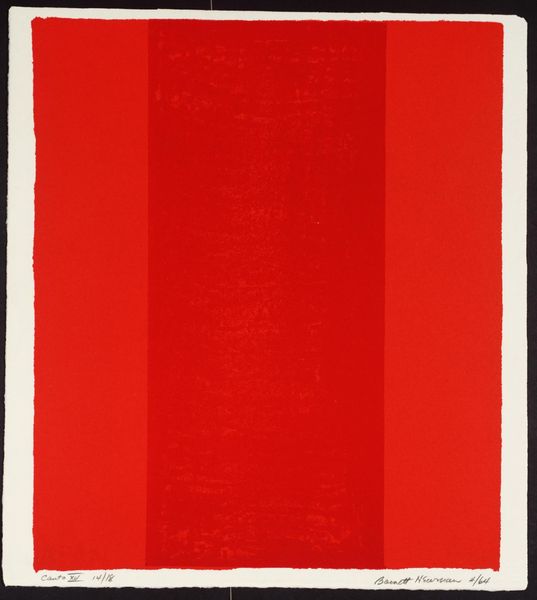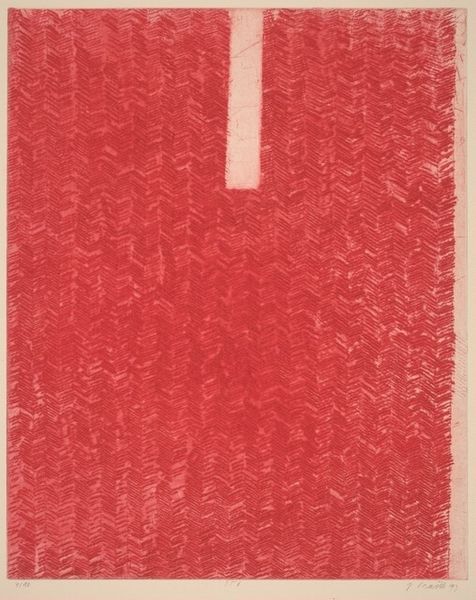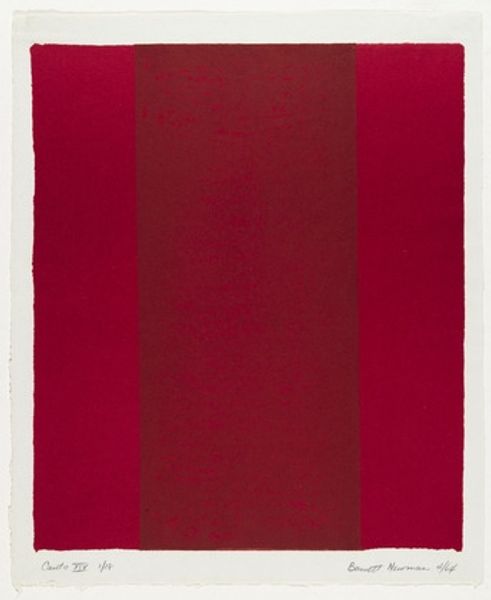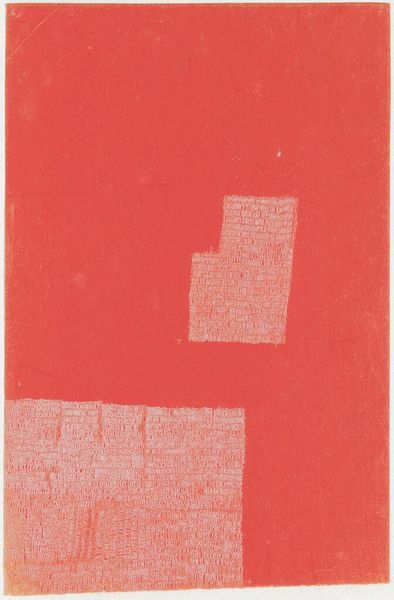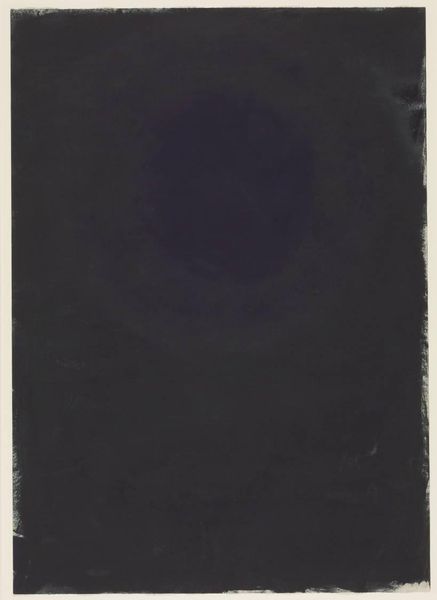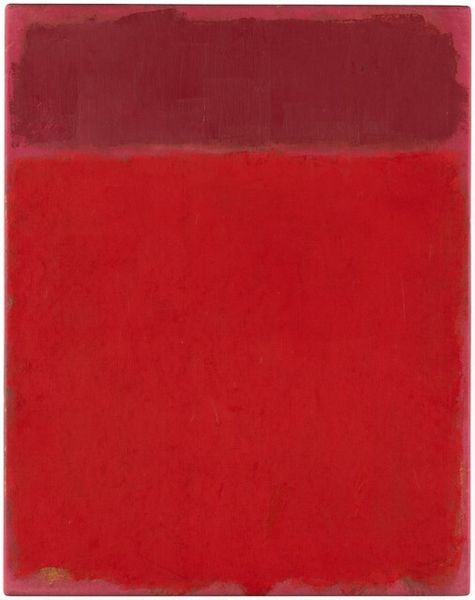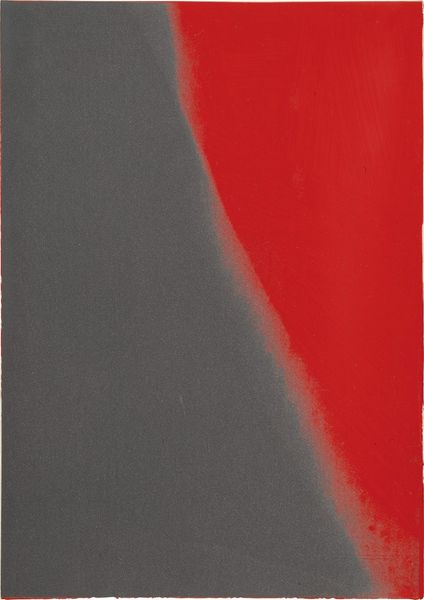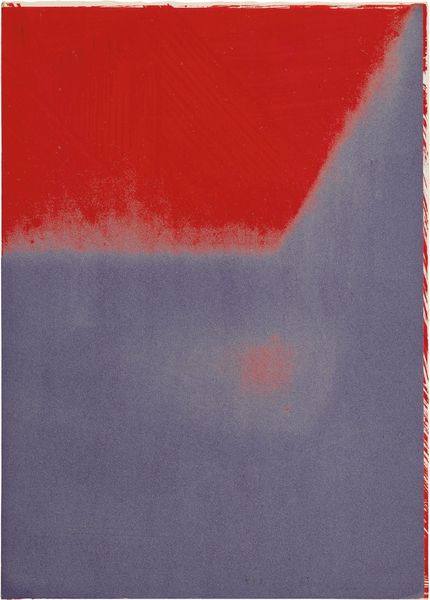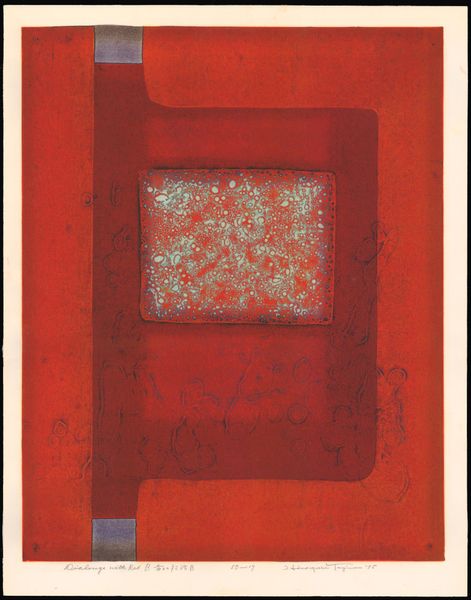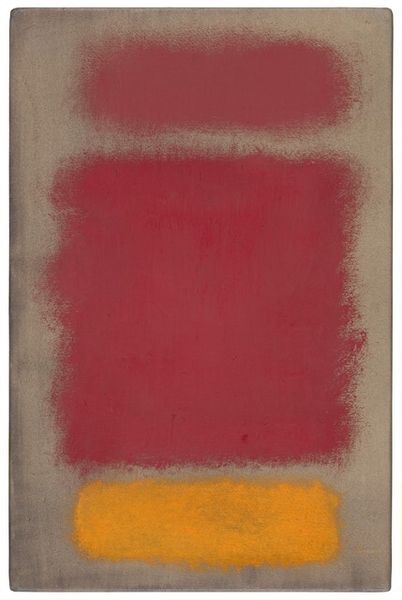
Dimensions: image: 375 x 319 mm
Copyright: © ARS, NY and DACS, London 2014 | CC-BY-NC-ND 4.0 DEED, Photo: Tate
Curator: Barnett Newman's "Canto XIV" from the Tate collection presents a striking visual encounter. What's your initial reaction? Editor: It's intense. Just this overwhelming field of red, disrupted only by that slightly darker, central stripe. It almost feels confrontational. Curator: Newman’s work often explored the sublime through these simplified forms. His use of the "zip," as he called those vertical bands, was meant to evoke a sense of presence and transcendence. Editor: I find myself thinking about the historical context of abstraction. How artists like Newman were breaking away from representational art, choosing instead to engage with pure form and color, often as a response to the political and social turmoil of the time. Curator: Absolutely. Abstract Expressionism was deeply embedded in the postwar American art scene, reflective of anxieties but also aspirations for a new world order. Editor: "Canto XIV" feels like a powerful statement of identity, a visceral scream against the backdrop of societal expectations. Curator: Yes, and Newman was very invested in the viewer's experience. He saw the canvas as an arena, a space for encountering the self. Editor: Understanding the politics of abstraction is key to appreciating its lasting impact. Curator: Indeed, it invites us to reconsider the very essence of what art can be.

